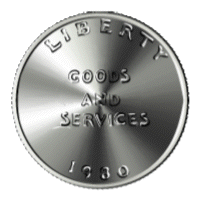
Search for goods and services
USA patent No. 10977387, titled Internet Search Mechanism, was granted by the US PTO on April 13th 2021 and has also been granted in Canada, Australia, New Zealand and South Africa, with the European patent currently under review. A more meaningful description would be - “An internet search mechanism for goods and services that only works in apps (mobile or desktop)”.
The independent valuation was conducted by Dr Fernando Da Cruz Vallencellos of Valuation Consulting. The method used for calculating this figure was based on the scenario where the patent and software were acquired by a global internet company, and they subsequently exploited its potential and gained 10% market share of the current ad-tech market. Bubblr commissioned their own IP firm to find the best candidate to value the patent.
Current accounting practices are such that we cannot take this valuation and change our balance sheet to reflect this. However, if the the patent was sold for $4.7bn (or more), then the company who bought the patent would be able to put the patent on its balance sheet at $4.7bn. For institutional investors or accredited investors, they would need to sign a “Hold Harmless” letter before given a copy of the 40 page valuation report.
This patent is a utility patent, which are much more difficult to get approved than design patents, which are the majority of patents that are successfully filed. 95% of patents that are approved in the US are never used in products, as the patent system is being abused by big companies to show they are spending money on R&D. Obviously our patent is a real one and is fundamental to our product offer. Steve Morris (the author) was told by two agencies that it would not be possible. The third firm we approached – Murgitroyds – thought it would be tough but were determined to try as they believed in what we were trying to do.
This patent (a utility patent which are notoriously difficult to get granted), contains 16 claims. The novelty of the patent is based on the combination of the first two claims – asynchronous searches, conducted anonymously. Individually neither claim is unique, however the combination of the two makes it unique and novel.
Search for information
A separate sister patent has been filed in the USA, which defines a new way of searching the Internet for information. US Patent Application No 17/980298 Title: Contextual Enveloping Via Dynamically Generated Hyperlinking. In essence, this patent describes a way of searching for information that is iterative, where searches can be done in the context of previous searches if required.
We will be asking Dr Fernando Da Cruz Vallencellos of Valuation Consulting to complete a valuation exercise on this patent in the very near future. In many ways it will be more difficult, as we believe searching for information is always best if it is not corrupted by advertising. Larry Page and Sergey Brin agreed with this statement in 1997.
Steve Morris was determined to patent a completely original way to search for information, that was not based on the 25 year old model of just typing key words in a search text box, and matching this search to a database of screen-scraped web data generated by web crawlers and and robot spiders. In addition, we needed a a search mechanism that could not be gamed by SEO, or by buying search priority position. So we needed a way to elevate search ranking for the better publishers and authors. It took Steve Morris 18 months to come up with a patent-able search mechanism that would do this.
Although this nominally a utility patent, it has much more of a design patent flavor to it than the original patent. Again, there are two key claims. The first claim is the contextualized search, where searches can be grouped together and subsequent searches can be automatically contextualized to the original search. The second claim is about dynamically generating hypertext results in real time in the search results. Our patent agent did extensive background searches for both of these claims and could find nothing like them. However, our agent said that a patent office could argue that a subject matter expert in this field could automatically conclude that these claims were self evident (despite no evidence that anyone actually does this). Consequently, he concluded it would best be submitted as a utility patent.
Asynchronous searching allows a user to receive results, as and if they become available, without having to repeatedly re-run a given set of search criteria. For an illustration of this, view the video.

*The title of the patent is slightly misleading and it should be more correctly titled ‘Internet search mechanism for goods and services.’
